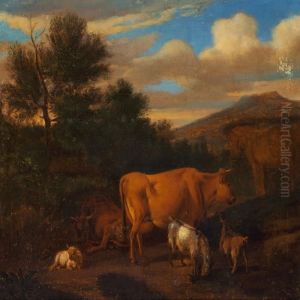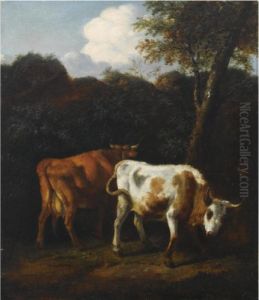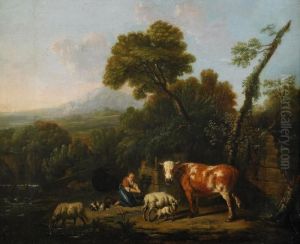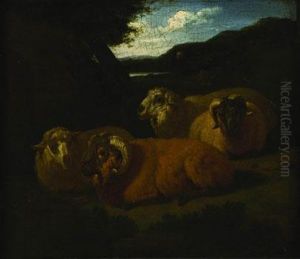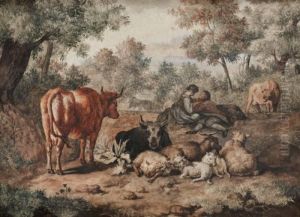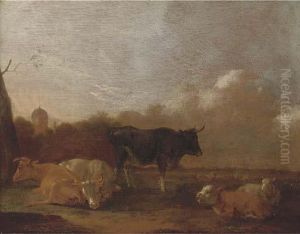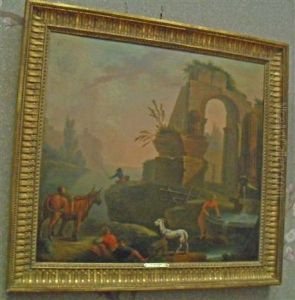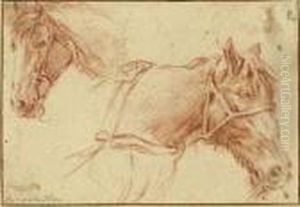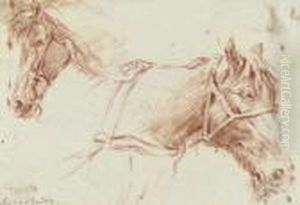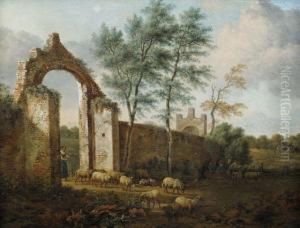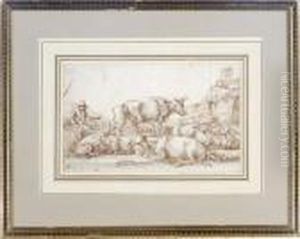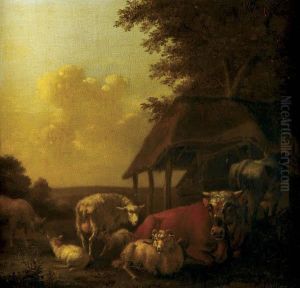Adrian Van De Velde Paintings
Adriaen van de Velde was a Dutch Golden Age artist known for his skillful pastoral landscapes and animal paintings. Born in Amsterdam in 1636 to a family of artists, his father Willem van de Velde the Elder and his brother Willem van de Velde the Younger were both respected marine painters. Unlike his family members, Adriaen chose to focus on landscapes and animals, often incorporating human figures and daily life into his works.
Adriaen was trained by his father and possibly by the landscape painter Jan Wijnants. His early works show a meticulous attention to detail and a serene quality that became the hallmark of his style. Van de Velde rapidly developed his own artistic identity, marked by a harmonious balance between figures, animals, and the surrounding environment. His landscapes are characterized by a delicate treatment of light and atmosphere, which he used to enhance the sense of calm in his scenes.
Despite his relatively short life, Adriaen van de Velde's work had a significant influence on Dutch landscape painting. He produced a wide range of works including full-scale paintings, drawings, and etchings, and was known to collaborate with other artists of the time, adding figures to their landscapes or seascapes. His ability to depict animals with great accuracy and sensitivity earned him the nickname 'the Raphael of the animals'.
Adriaen van de Velde died prematurely in 1672, at the age of 35. His death was a loss to the Dutch art world, as he was one of the most talented and promising artists of his generation. His works continued to be celebrated after his death and remain highly valued by collectors and art historians for their technical excellence and tranquil beauty.
